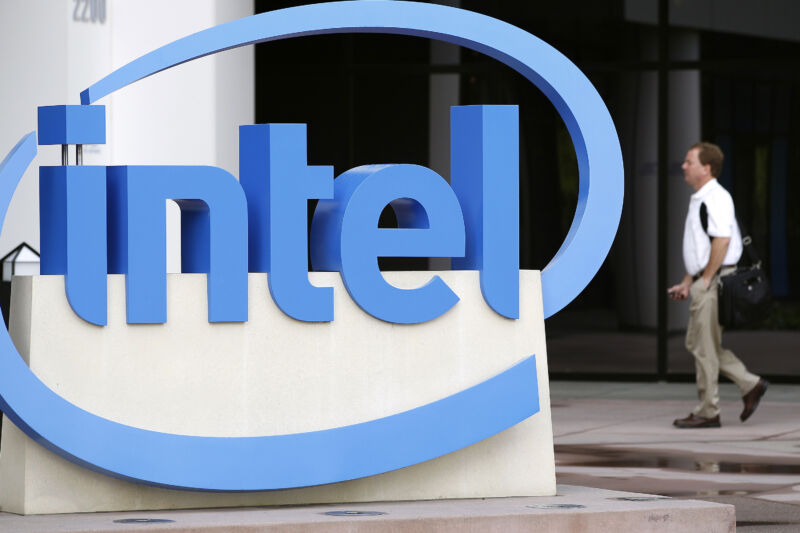Many of Intel’s current woes can be traced to the fact that the company was left out of the iPhone. Whether Intel passed on the opportunity or couldn’t meet the spec is by now a moot point, but missing out on the smartphone revolution—and its billions of chips—played no small part in the company falling behind the leading edge.
Now, Intel is ponying up $1 billion in an attempt to avoid repeating history.
The company announced an “innovation fund” this week that places bets on a couple of key technologies, chief among them RISC-V, a free, open source instruction set that shows promise in low-power and embedded systems, markets that are expected to grow significantly over the next several years.
Distracted competitor
Intel’s announcement conveniently comes at a time when one of its main competitors, Arm, is somewhat distracted. Nvidia’s acquisition of the British company, recently valued at $80 billion, was challenged by regulators around the world, and earlier this week, the deal finally fell apart. Arm’s current owner, SoftBank Group, is desperate for cash. It wants to unload the chip designer while the market for semiconductors is hot, hoping that any windfall will make up for a string of losses caused by everything from China’s tech crackdown to the WeWork flop.
With the Nvidia acquisition scuppered, Arm appears headed toward an IPO, a long and laborious process that will take many months to complete. That’s not to say that Arm’s engineers won’t keep sharpening their designs, but it does give Intel a small opening.
Intel’s investment in RISC-V isn’t just calculated—it’s complementary. The company’s existing processors are as powerful as they are power-hungry, and they run the decades-old x86 architecture. RISC-V, on the other hand, is relatively new, having been developed at UC-Berkeley just over a decade ago. As an instruction set, it’s fairly trim, and chips that use it tend to be smaller than competing ARM designs. Still, RISC-V is immature compared with ARM instruction sets, which have been refined over decades with the help of feedback from myriad customers. While RISC-V is not quite ready to challenge ARM-based smartphones, it has begun to make inroads in embedded systems, another market where ARM excels.
In pushing RISC-V, Intel appears to be ceding the current smartphone market to Arm (it wasn’t much of a competition anyway) while betting on simpler, smaller, and even lower-power chips that promise to be in everything from cars to smart lightbulbs. In other words, Intel is trying to squeeze Arm from the top and the bottom.
Manufacturing experience
While RISC-V chips tend to be small, their production numbers are not. RISC-V supplier Andes Technology said more than 3 billion SoCs using its intellectual property shipped last year alone.
The new fund will no doubt bolster Intel’s relationships with promising RISC-V designers, including Taiwan-based Andes Technology and US-based SiFive. The fabless companies have been making their designs with TSMC, though the new partnership will probably help Intel peel off some of that business. If the bet pays off, Intel will gain experience manufacturing low-power chips, an area TSMC has plenty of experience in.
Volume from RISC-V chips could not only help Intel fill its newly announced fabs—two in Arizona and two in Ohio—it could also help the company refine its manufacturing processes. TSMC was able to push ahead of the competition in part because it made enormous quantities of chips. That allowed the Taiwanese company to work out the kinks in ever more advanced nodes, and by reaching the most advanced nodes first, TSMC put itself in a better position to win new orders, giving it even more volume. It’s a positive feedback loop that has allowed the company to become a juggernaut in the foundry world.
Intel’s nascent foundry operation is small by comparison, but by starting with low-power and embedded systems, where all-out performance isn’t a requirement, the company can establish a beachhead that will let it win some orders in a new corner of the market. Intel is clearly hoping to combine revenue and process learnings from its foundry and IDM operations to create a similar sort of feedback loop.
Given enough time, Intel may be able to use its expertise with RISC-V to push into other markets, just as Arm’s designs are now found in everything from automotive brake controllers to laptops and data centers. That’s a big "if," but to Intel CEO Pat Gelsinger, it’s likely an opportunity that’s too tempting to pass up.
But at $1 billion, is Intel’s bet big enough?



3175x175(CURRENT).thumb.jpg.b05acc060982b36f5891ba728e6d953c.jpg)

Recommended Comments
Join the conversation
You can post now and register later. If you have an account, sign in now to post with your account.
Note: Your post will require moderator approval before it will be visible.